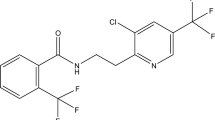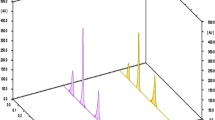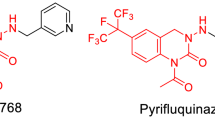Abstract
ONE of the most serious pests of tobacco in Southern Rhodesia is the eelworm, Heterodera marioni. Control of this organism is effected by injecting the soil, by means of a plunger-type injector, with ethylene dibromide or a dichloropropene–diehloropropane mixture. During the 1951–52 growing season, it has been estimated that the latter fumigant has produced ‘off-odours’ in approximately five per cent of the tobacco crop. These odours first become apparent during the curing process, and persist through all subsequent stages of processing. Impurities in the fumigant mixture have been shown to be responsible for this tainting and have been isolated and characterized by the methods described below.
This is a preview of subscription content, access via your institution
Access options
Subscribe to this journal
Receive 51 print issues and online access
$199.00 per year
only $3.90 per issue
Buy this article
- Purchase on Springer Link
- Instant access to full article PDF
Prices may be subject to local taxes which are calculated during checkout
Similar content being viewed by others
References
Brown and Campbell, J. Chem. Soc., 1699 (1937).
Author information
Authors and Affiliations
Rights and permissions
About this article
Cite this article
SHEPHERD, C. Tainting of Tobacco by a Dichloropropene—Dichloropropane Soil Fumigant. Nature 170, 1073–1074 (1952). https://doi.org/10.1038/1701073b0
Issue Date:
DOI: https://doi.org/10.1038/1701073b0
Comments
By submitting a comment you agree to abide by our Terms and Community Guidelines. If you find something abusive or that does not comply with our terms or guidelines please flag it as inappropriate.



